Pangrattato is a crispy and delicious Italian breadcrumb. It is made with Italian bread that is toasted in garlic infused olive oil and tossed with fresh herbs. It takes less than 30 minutes to make and is the perfect topping for pasta, vegetables, and more!
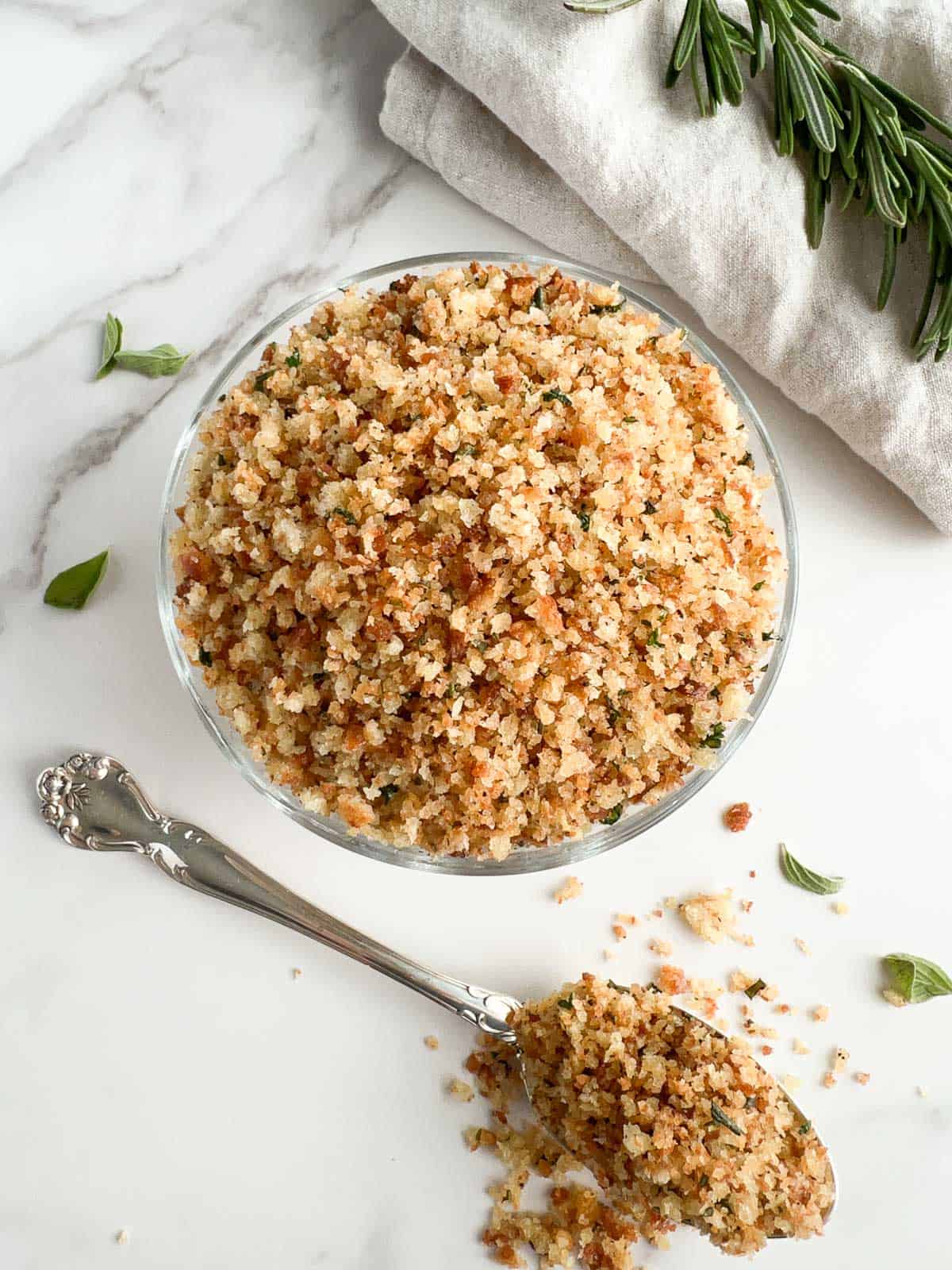
Save This Recipe! 💌
In an Italian household, breadcrumbs are a pantry staple. Growing up, my nonni made the best breadcrumb topping completely from scratch, using all simple ingredients. Also known as pangrattato, we used these coarse breadcrumbs to top our favorite dishes. It added the perfect texture and savory bite.
I began making my own pangrattato out of necessity and it has turned into one of my favorite recipes! I was unable to find packaged breadcrumbs that captured the amazing flavor and texture of my nonni's homemade version. I also noticed that many had ultra-processed ingredients, like additives and preservatives, that I preferred to avoid. So I set out to make my own, using simple olive oil and fresh herbs like my nonni did. The end result is these delicious breadcrumbs that are perfectly crisp and full of herby, nostalgic flavor.
I always keep this pangrattato on hand, using it to add texture and flavor to a variety of dishes. My favorite is sprinkling this over my 6 cheese mac and cheese, Italian mac and cheese, and mushroom pappardelle, with the crunchy breadcrumbs contrasting well with the creamy pasta! It also goes great on top of soups, like chicken minestrone soup, vegetable orzo soup, or authentic pasta e fagioli.
Jump to:
Ingredients
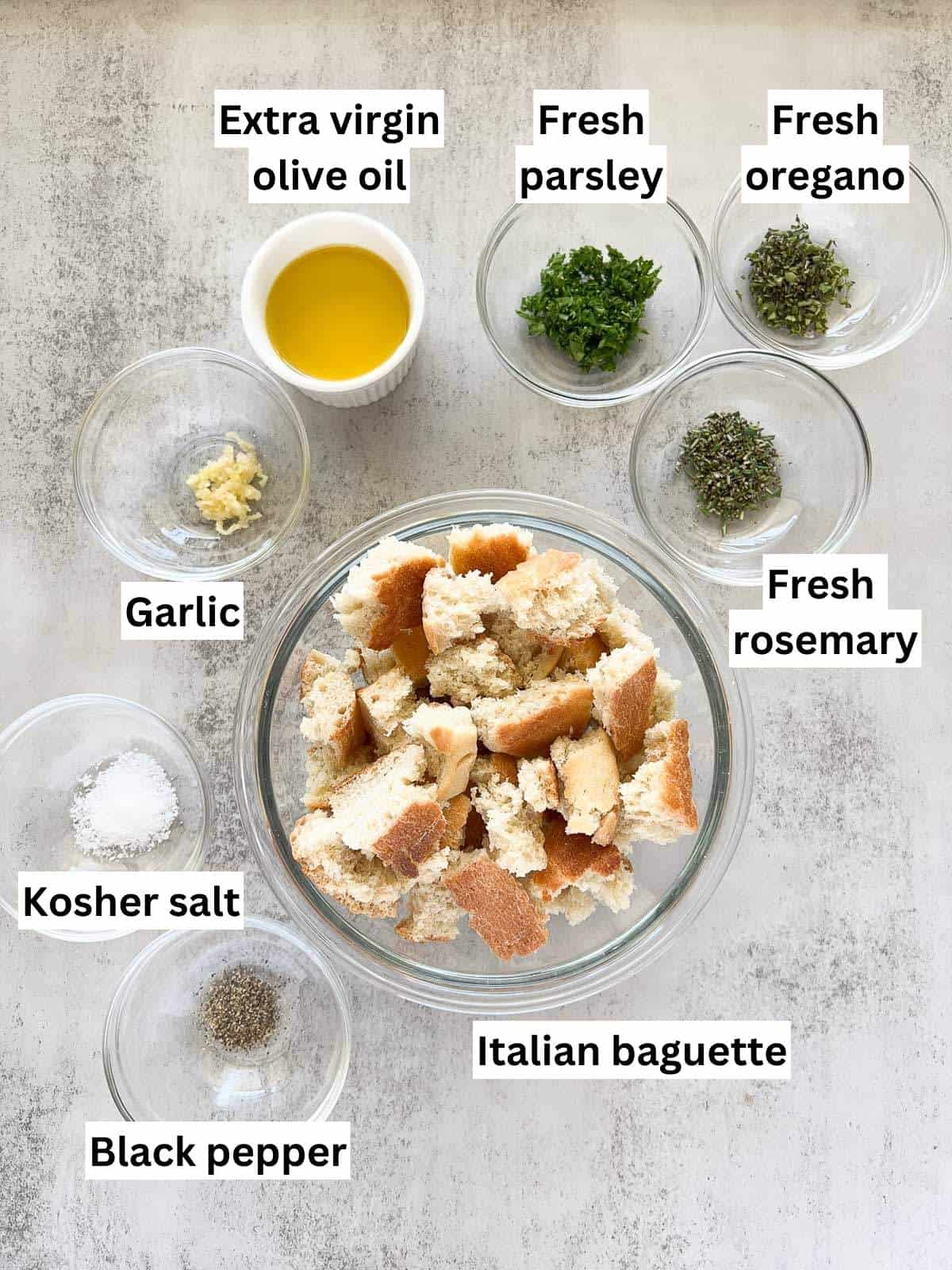
Ingredient Notes
- Italian baguette: I prefer to use an Italian baguette because it toasts well and forms the coarse breadcrumbs that pangrattato is known for. I use this homemade stirato bread, an Italian baguette with a perfectly chewy and rustic texture. It soaks up the garlic infused olive oil and stays crispy. This recipe works best when the bread is stale because it toasts faster. To accelerate the staling process, I will leave the bread in the refrigerator for a day or two. The cold temperature recrystallizes the starch, causing the bread to become stale faster. If you don't have time to wait for stale bread, it's no problem. I have made this recipe with fresh bread and had excellent results, although it may need a few extra minutes on the skillet to reach the desired crispiness.
- Fresh parsley oregano, and rosemary: I love using fresh herbs because they have a more vibrant and robust flavor compared to dry ones. They also add beautiful pops of green in the breadcrumbs!
- Extra virgin olive oil: the olive oil is the star of this recipe, serving as the foundation for the pangrattato. It cooks on low heat with the garlic, allowing it to infuse with complex flavor. I recommend using a high quality extra virgin oil, which is less processed than a regular olive oil. I also find it has a better flavor, with bright and peppery notes. When choosing an olive oil, stick to those in dark bottles, as light can make it lose it's flavor and aroma. It's also important to store it in a cool, dark place to maintain it's freshness. For this reason, I never store it by the stove!
See recipe card for quantities.
Substitutions and Variations
- Bread: if you don't have an Italian baguette on hand, you can use any sturdy, crusty bread that will form coarse breadcrumbs. Ciabatta, sourdough, or French bread are delicious options.
- Use dry herbs: you can substitute the fresh herbs with dry ones. To do so, use ⅓ the amount of dry herbs compared to fresh. Since the dry herbs take longer to soften and release their flavor, I recommend adding them earlier in the cook time than you would the fresh herbs. The notes section of the recipe card will have all the details for making this substitution.
- Add more seasoning: feel free to have fun with the seasoning! You can add fresh thyme for a slightly floral and sweet taste. Italian seasoning would be a great option to enhance the authentic Italian flavors. You can even add a bit of crushed red pepper for a spicy kick. I recommend starting small and adding more to taste if needed.
- Add cheese: you can add richness and umami by stirring in some grated cheese after the breadcrumbs have cooled to room temperature. I love using Parmigiano Reggiano or Pecorino Romano.
Instructions
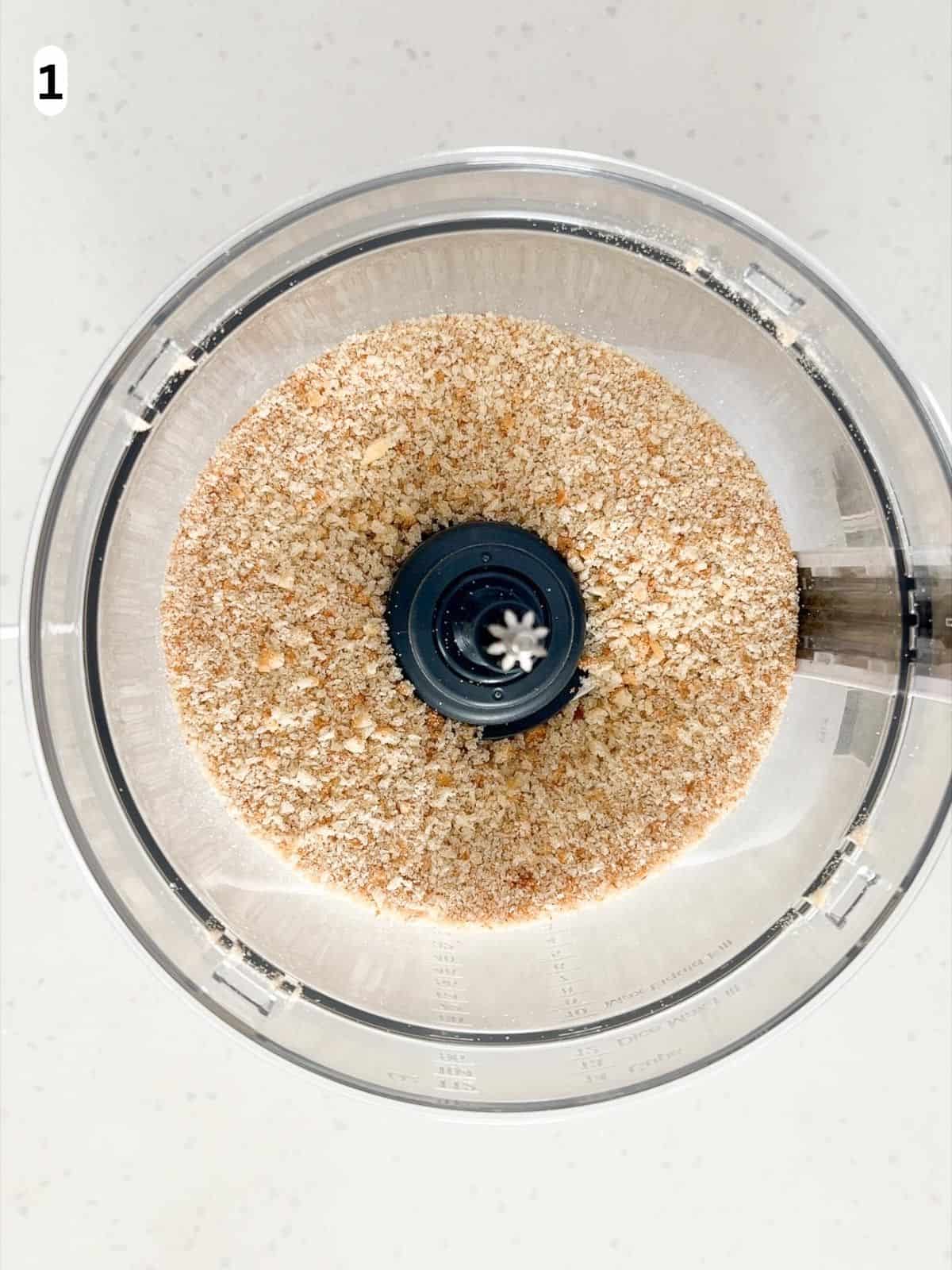
Step 1: tear the bread into small pieces and place them in a food processor. Blend until they form coarse breadcrumbs.
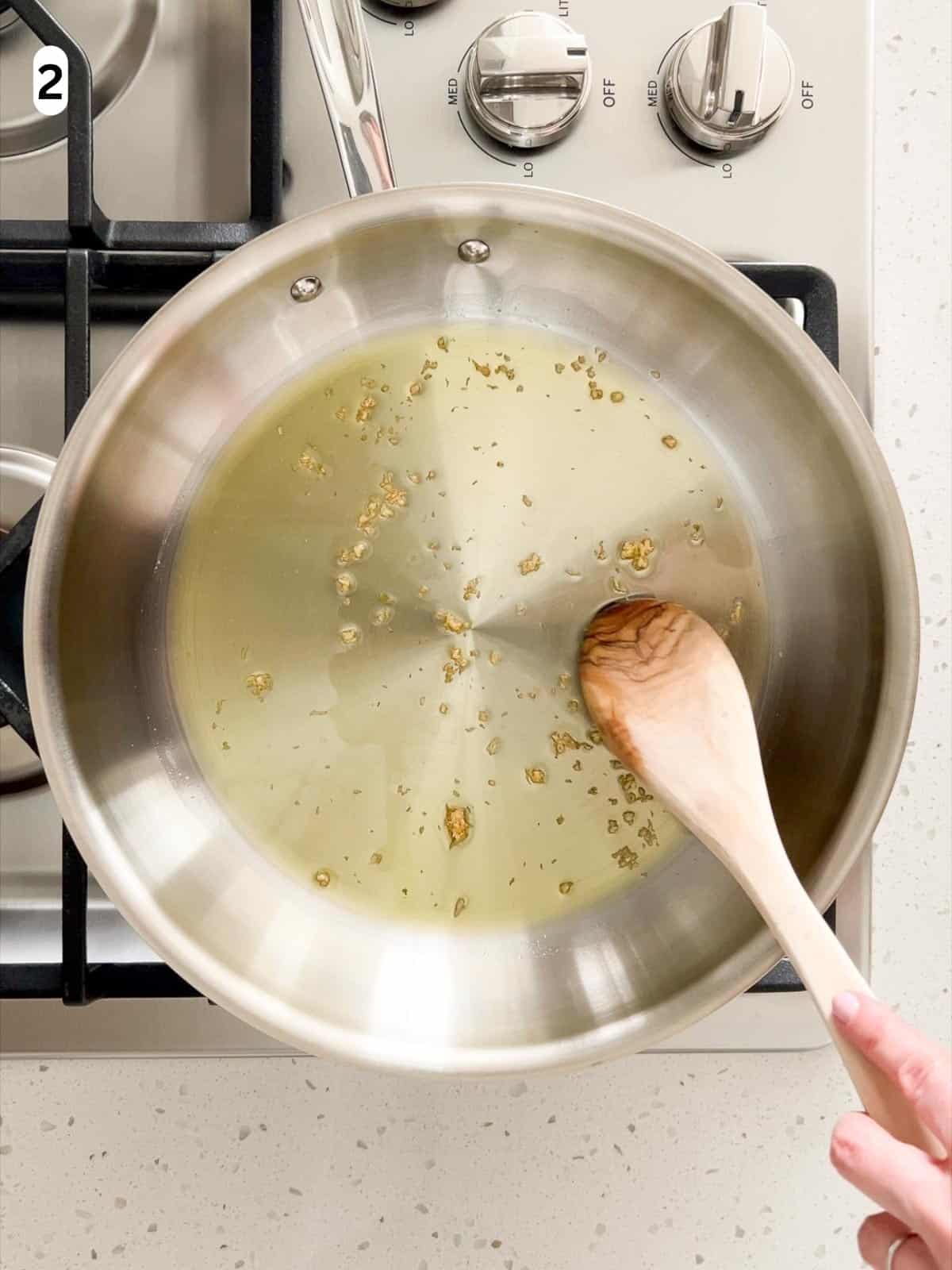
Step 2: heat the olive oil in a large skillet over low heat. Then add the garlic, letting it infuse the oil for about 5 minutes until it is fragrant and golden.
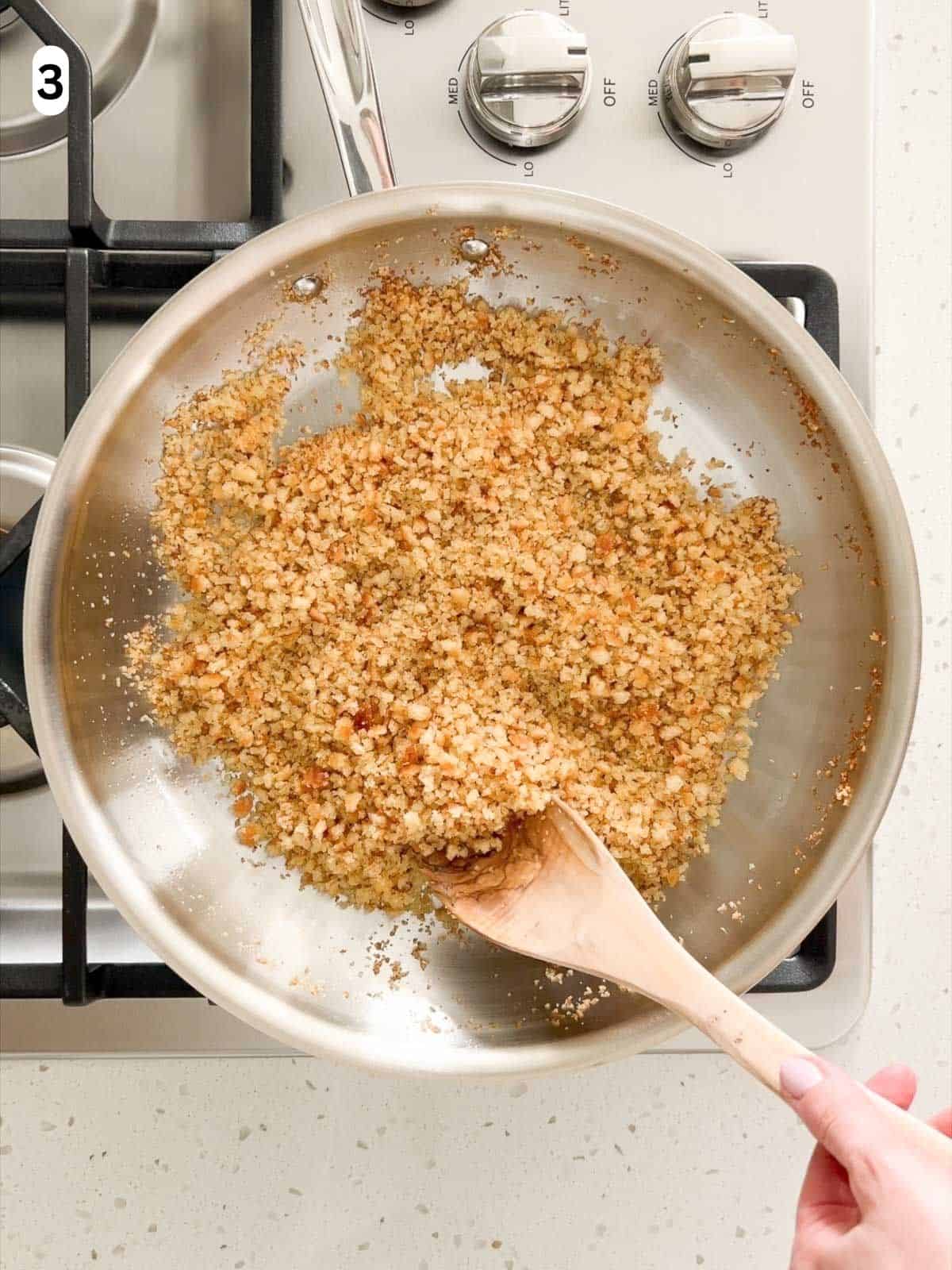
Step 3: add the breadcrumbs and toss them in the garlic infused oil until they are evenly coated. Then increase the heat to medium, toasting the breadcrumbs for about 5 to 7 minutes until they are golden brown and crispy. Stir often so they don't burn.

Step 4: once the breadcrumbs are crispy and golden, stir in the fresh parsley, rosemary, oregano, salt, and pepper. Cook for an additional 1 to 2 minutes to let the flavors develop. Add more salt to taste as needed. Then remove from the heat and let cool slightly before sprinkling over your favorite dish. Enjoy!
Equipment
- Food processor or blender: this is used to grind up the pieces of bread into a coarse breadcrumb. If you don't have this equipment on hand, you can instead use a box grater to make breadcrumbs. I like to use the coarse side of the grater (the side with the largest holes). Using a box grater works best when the bread is stale.
Storage
You can store pangrattato in an airtight container in the refrigerator for up to 1 week or in the freezer for up to 3 months. When ready to use, you can defrost the breadcrumbs in the refrigerator overnight.
See the USDA Leftovers and Food Safety guide for more information on how to store leftovers safely.
Expert tips
- For the best flavor, infuse the olive oil with garlic over low heat. This serves as the base for the pangrattato, giving it a complex garlic flavor that is not overpowering.
- Use a stale bread to speed up the preparation and cook time. Stale bread is easier to grind into coarse breadcrumbs and will toast faster. Storing your bread in the refrigerator for a day or two will speed up the staling process, by recrystallizing the starch molecules. The refrigerator also has a lower level of humidity that dries the bread out faster.
FAQ
Pangrattato is an Italian breadcrumb topping made by toasting breadcrumbs in olive oil, garlic, and fresh herbs. It's used to add a crispy, flavorful crunch to dishes like pasta, soups, or vegetables, providing both texture and a savory finish. The name "pangrattato" means "breadcrumbs" in Italian, and it's a simple yet delicious way to elevate a dish!
Pangrattato is coarser than regular breadcrumbs, giving it a characteristic crunchy texture and rustic appearance. It is commonly used as a topping for salads, soups, or pasta dishes. Regular breadcrumbs have a finer texture and are more commonly used as a coating for fried or baked dishes, like vegetables, chicken, or fish.
Pangrattato has a perfectly crisp texture and herb flavor that goes with many dishes! In Italian cuisine, it is traditionally used as a frugal alternative to grated cheese. You can keep this in mind, sprinkling pangrattato over any dish that you would normally top with grated cheese. I love to sprinkle it over 6 cheese mac and cheese, bucatini pomodoro, and rigatoni al forno.
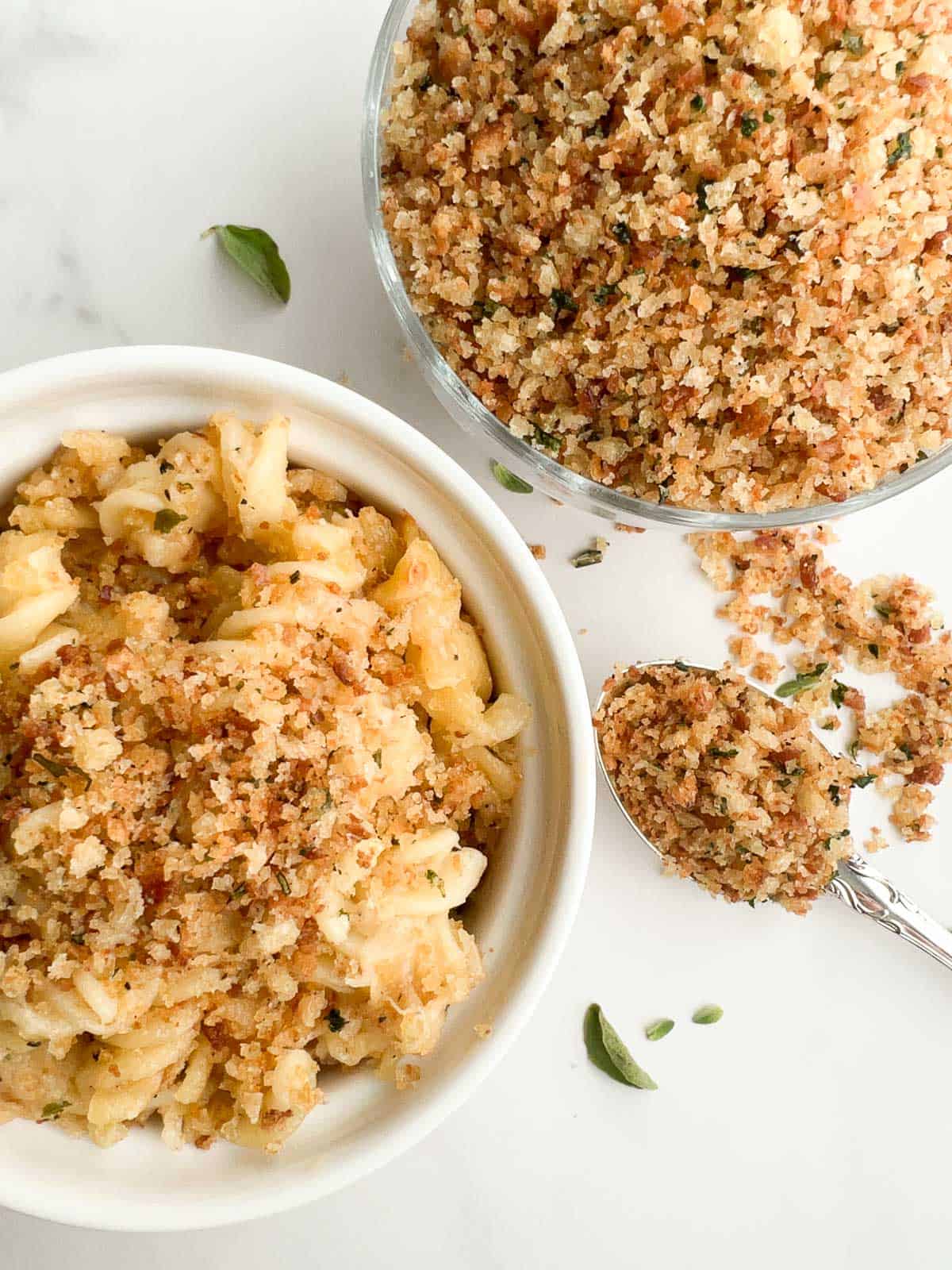
Related
Looking for more delicious Italian condiments? Check out these favorites:
Pairing
These are my favorite dishes to top with pangrattato:
Did you make this recipe? I'd love to hear all about it! Leave a star rating and comment below. Subscribe to my newsletter for delicious Italian recipes straight to your inbox!
Recipe

Pangrattato
Save This Recipe! 💌
Ingredients
- 7 ounces Italian baguette (stale, about 2 cups)*
- ¼ cup extra virgin olive oil
- 2 cloves garlic (minced)
- 1 tablespoon fresh parsley (chopped)*
- 1 teaspoon fresh rosemary (chopped)*
- 1 teaspoon fresh oregano (chopped)*
- ½ teaspoon kosher salt
- ¼ teaspoon black pepper
Instructions
- Prepare the breadcrumbs: tear the bread into small pieces and place them in a food processor. Blend until they form coarse breadcrumbs.
- Infuse the olive oil and garlic: heat the olive oil in a large skillet over low heat. Then add the garlic and sauté until fragrant and golden, about 5 minutes.
- Add the breadcrumbs: add the breadcrumbs to the skillet and toss them with the garlic infused oil until evenly coated. Then increase the heat to medium and toast the breadcrumbs for about 5 to 7 minutes until they are crisp and golden. Stir the breadcrumbs frequently so they don't burn.
- Stir in the fresh herbs and seasoning: once the breadcrumbs are golden and crisp, stir in the parsley, rosemary, oregano, salt, and pepper. Continue cooking for an additional 1 to 2 minutes to let the flavors meld. Add more salt to taste as needed. Then remove from the heat and let cool slightly before sprinkling over your favorite dish. Enjoy!
Video
Notes
- Italian baguette: I love using stirato bread because it is sturdy with a rustic texture. It soaks up the garlic infused olive oil while staying crispy. You can use a different type of bread, as long as it toasts well. Ciabatta, sourdough, or French bread would be great options. Stale bread works best because it's easier to grind into breadcrumbs and toasts faster. I like to keep my bread in the refrigerator for a day or two to speed up the staling process. If you don't have time to wait for stale bread, this recipe still works! I have had great results using fresh bread, but it may need to cook longer in Step 3 to reach the desired level of crispiness.
- Parsley, rosemary, and oregano: you can use dry herbs instead, using ⅓ the amount of the fresh herbs. Dry herbs will need more cooking time to soften and release their flavors. I recommend adding them in Step 3 when you start toasting the breadcrumbs.
- Add more seasoning: have fun with the seasoning! Fresh thyme will give the breadcrumbs a subtle sweetness. Italian seasoning enhances the authentic Italian flavors. If you love spice, you can add a bit of crushed red pepper for a kick! I recommend starting small, adding fresh herbs in 1 teaspoon increments and dry herbs in ¼ teaspoon increments. You can add more to taste if needed.
- Add cheese: increase the umami and richness with some grated cheese. The best time to add the cheese is after the breadcrumbs have finished cooking and have cooled to room temperature. I prefer using 2 tablespoons of a grated cheese, which adds flavor without overpowering the other ingredients. Parmigiano-Reggiano and pecorino romano are great options.
- Equipment: a food processor or blender to grind up the breadcrumbs. If you don't have either, you can instead use the coarse side of a box grater (the side with the largest holes). A box grater works best with stale bread.
- Storage: the pangrattato can be stored in an airtight container in the refrigerator for up to 1 week or in the freezer for up to 3 months. When ready to use, defrost the breadcrumbs in the refrigerator overnight.
Nutrition
The provided nutrition and storage information is estimated. Accuracy is not guaranteed.
See our Disclaimer for more information.
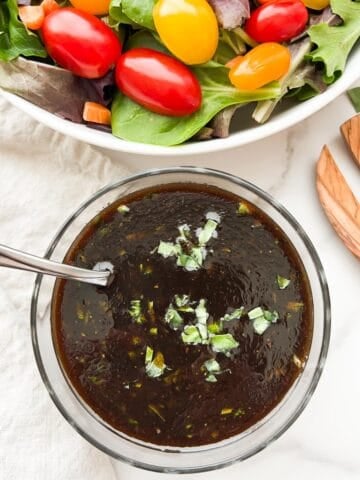
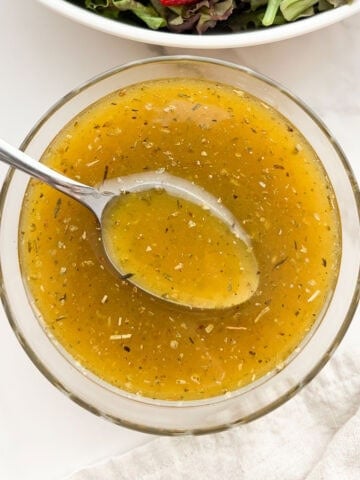
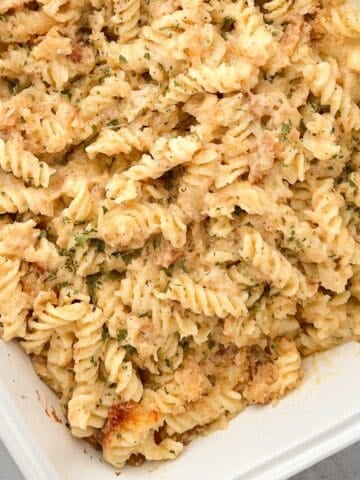
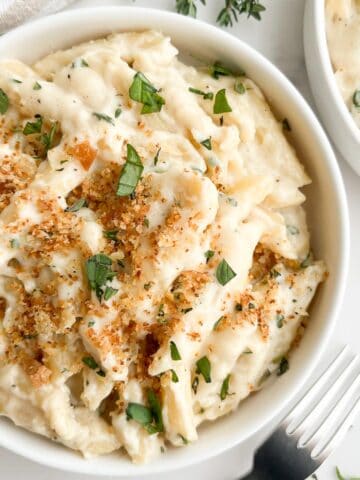
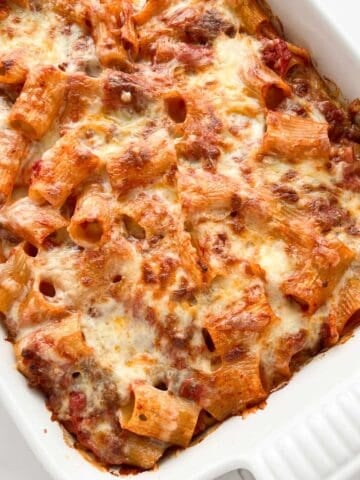
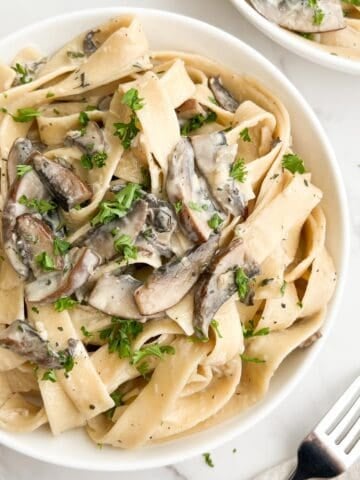



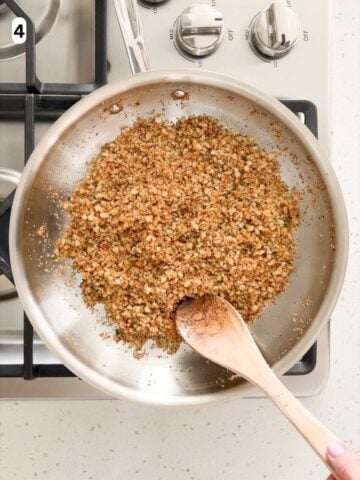



rd says
This pangrattato makes any meal special. It is quick, easy to make, and goes well on so many different foods. I’ve used it on pasta, mac and cheese, even on salad! I can’t get enough, and you won’t either. A perfect breadcrumb is something that adds a delicious flavor and crunch to any dish. Give it a try, you’ll be glad you did!
Maria D'Errico says
Thank you, I'm glad you love this recipe!